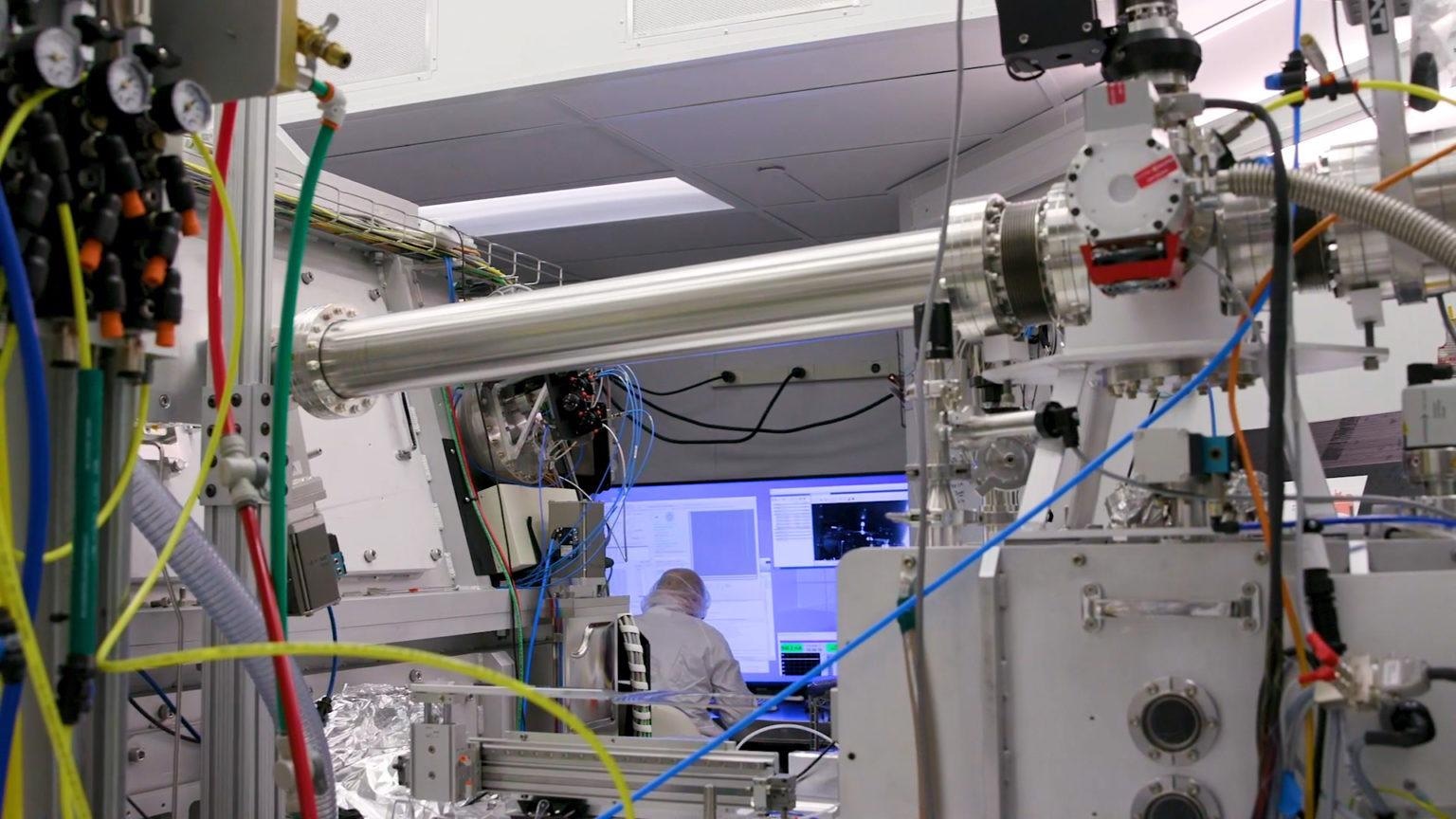Electronic devices that were once thought to be the stuff of science fiction have become a reality thanks to the advances in microelectronics – also called chips or microchips – have facilitated fast, robust, compact laptops and smartphones.
 For the past 25 years, CXRO scientists and engineers have worked side by side with microelectronics industry leaders to tackle the significant technological advances required to develop EUV lithography. Image Credit: Marilyn Sargent/Berkeley Lab.
For the past 25 years, CXRO scientists and engineers have worked side by side with microelectronics industry leaders to tackle the significant technological advances required to develop EUV lithography. Image Credit: Marilyn Sargent/Berkeley Lab.
Chips comprise miniaturized parts known as transistors – minute silicon switches that process and store data as zeroes and ones, the computers’ binary language. The more transistors a chip contains, the quicker it can process data. The most advanced chip currently available is approximately the size of a fingernail and comprises over 100 billion transistors.
Since the 1960s, the chip sector has depended on lithography – a method that uses light to print minute patterns on silicon to mass-manufacture microchips. Over the years, progress in lithography has facilitated the application of smaller and smaller wavelengths and thus, enabling the fabrication of smaller transistors.
In the initial years of chip innovation, lithography tools first used visible light, with wavelengths as small as 400 nm, and then ultraviolet (UV) light (as small as 248 nm) and deep UV light (193 nm).
At present, the chip sector has moved into a new era: extreme UV lithography (EUVL), a ground-breaking method that uses short wavelengths of merely 13.5 nm, which is approximately 20 times smaller than UV light and 40 times smaller than visible light.
This short EUV wavelength allows the microelectronics sector to print transistors and microchip circuits that are tens of thousands of times thinner in comparison to a strand of human hair – and buy more time for Moore’s Law, which estimated in 1965 that the number of transistors positioned on a chip would grow two times every 2 years until the technology reached its boundaries in performance and miniaturization.
When you’re talking about the future of semiconductor manufacturing, we’re talking about extending Moore’s Law – and that has been our primary focus for decades.
Patrick Naulleau, Director of Center for X-Ray Optics, Department of Energy, Lawrence Berkeley National Laboratory (Berkeley Lab)
Patrick Naulleau is also a leading professional in the complex science surrounding EUVL.
In 2019, EUV lithography was commercialized, but it took several years of research to reach this milestone. A lot of which was feasible due to the exceptional capabilities of the CXRO. In the last 25 years, CXRO researchers and engineers have partnered with microelectronics industry leaders to handle the major technological advances needed to progress EUVL.
According to Naulleau, the small wavelength in EUVL is very close to X-Ray light and thus necessitates new instruments that far surpass the competencies of early lithography, which used longer and less energetic wavelengths of UV light and visible light.
(On the electromagnetic range, system scientists used to categorize all ranges of light according to their equivalent wavelength, X-Ray light ranges from 0.01 to 10 nm; extreme UV or EUV light ranges from 10 to 124 nm; and UV light from 124 to 400 nm, Naulleau clarifies.)
Few analysts state that the end of Moore’s Law nearing. But it could be several years before the contemporary chip reaches its boundary for improvement, thanks to progress in materials and instrumentation facilitated by the CXRO, Naulleau says.
In this clean room at Berkeley Lab’s Center for X-Ray Optics, researchers use extreme ultraviolet lithography (EUVL) to advance the creation of next-generation, ultra-small computer chips. A human hair is 50–100 micrometers. Each image from the EUVL system is 200 x 30 micrometers and is extremely information-rich. Video Credit: EUV Materials Research Center/Berkeley Lab.